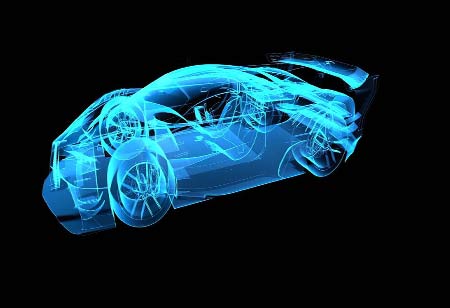THANK YOU FOR SUBSCRIBING
THANK YOU FOR SUBSCRIBING
Be first to read the latest tech news, Industry Leader's Insights, and CIO interviews of medium and large enterprises exclusively from Auto Tech Outlook

By
Auto Tech Outlook | Thursday, March 27, 2025
Stay ahead of the industry with exclusive feature stories on the top companies, expert insights and the latest news delivered straight to your inbox. Subscribe today.
Electric vehicles (EVs) have long been heralded as the future, with mandates in place across the globe to achieve zero-emission transportation.
FREMONT, CA: Electric vehicle (EV) technology advancements have accelerated the electrification, intelligence, and sustainability of modern transportation. Modern electric, hybrid electric, and fuel cell vehicles are strongly supported by academia, business, and governments to create sustainable transportation networks. These vehicles also have significant advantages in terms of accelerating the development of low-carbon technologies and achieving carbon neutrality.
On the one hand, advancements in four crucial EV areas—energy storage, electric propulsion (including motor drives and regenerative braking), electric drivetrains, and chargers—are always predicted. However, in the future decades, research will continue into vehicle-to-vehicle (V2V), vehicle-to-home (V2H), and vehicle-to-grid (V2G) operations. Wireless EV energy networks, which exceed V2V, V2H, and V2G interactions in terms of mobility and functionality, are projected to become a prominent topic in the meantime. These networks will be notably useful for energy trading and transmission as well as power grid interactions.
With requirements in place all around the world to attain zero-emission transportation, electric vehicles (EVs) have long been hailed as the future. Moreover, EVs are becoming more prevalent; the International Energy Agency predicts that by 2030, the global EV stock will reach $350 million.
One innovation that potentially helps address many of the issues in the EV ecosystem and accelerate adoption is digital twin technology. To run simulations, conduct analyses, and perform monitoring, a physical system is replicated virtually in a digital twin. The model builds an emulation to test how the real system will respond to various scenarios using data from sensors and other sources. This saves time and money by catching and fixing problems before production begins.
Given that every component of the car is connected to multiple computer-based subsystems, connected cars open up a wide range of new opportunities for criminal activity. The connections give a wide attack surface for hackers to take advantage of, including infotainment, engine control units, steering columns, and brake lines. For instance, Advanced Driver Assistance Systems (ADAS) are more vulnerable to security flaws, demand more sensor input, analyse more data, and manage more connections. The automobile is theoretically attackable at each point of connectivity.
To identify potential vulnerabilities or flaws that hackers can exploit, development teams can replicate the behaviour of systems inside the EV ecosystem by installing a digital twin. Before the EV is put into production, manufacturers can do several stress tests and simulations to find security flaws and fix them. The stress tests assist in making the vehicle as secure as possible, lowering the likelihood of an effective attack. The development teams can also assess the security of the EV ecosystem using the virtual model to make sure that components like the payment systems and charging infrastructure don't pose vulnerabilities. For the EV sector, adopting a zero-trust security posture is essential.
The digital twin continues to be essential once the EV is on the road. The application may continuously monitor performance and identify any new anomalies or weaknesses that could turn into a security vulnerabilities with regular system and software updates. Emulation lowers the possibility of a security breach by allowing issues to be fixed before they arise.
 Copyright © 2025 AutoTech Outlook. All Rights Reserved | Privacy Policy | Subscribe | Sitemap | About us | Feedback Policy | Editorial Policy
Copyright © 2025 AutoTech Outlook. All Rights Reserved | Privacy Policy | Subscribe | Sitemap | About us | Feedback Policy | Editorial Policy 



